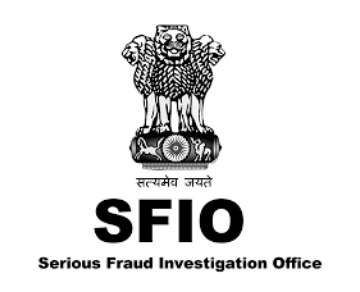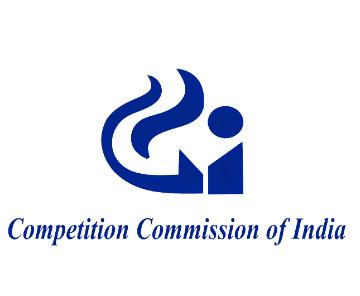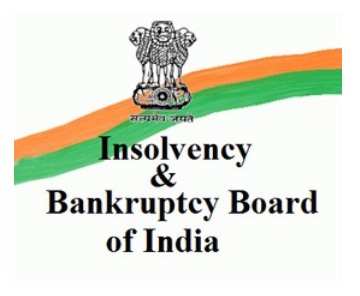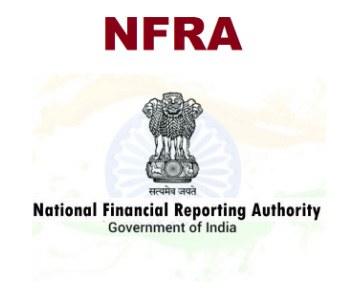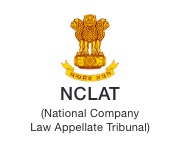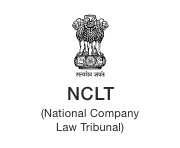
Restructuring and Liquidation
1. Businesses need efficient and speedy procedures for exit as much as for start-up. World over, insolvency procedures help entrepreneurs close down unviable businesses and start up new ones. This ensures that the human and economic resources of a country are continuously rechannelised to efficient use thereby increasing the overall productivity of the economy.
2. However, as businesses grow in size there is also a danger that poor management, bad business judgement or plain fraud may result in a business becoming unviable. In such cases it is possible for the productivity of the enterprise to be restored at a low cost and without attendant trauma for the stakeholders by providing more capable managerial talent an opportunity to run it. In fact recent times have shown possibility of growth by entrepreneurs, some of them Indian, who have become dominant business entities internationally by achieving turnaround of sick firms and revitalization of dormant capacities.
3. The Indian system provides neither an opportunity for speedy and effective rehabilitation nor for an efficient exit. The process for rehabilitation, regulated by the Sick Industrial Companies (Special Provisions) Act 1985 through the institutional structure of BIFR is amenable to delays and does not provide a balanced or effective framework for all stakeholders. The process of liquidation and winding up is costly, inordinately lengthy and results in almost complete erosion of asset value.
4. The Committee noted that a beginning towards reform was made with the enactment of Companies (Second Amendment) Act, 2002, which in addition to significant changes in the restructuring and liquidation provisions provided for the setting up of a new institutional structure in the form of the National Company Law Tribunal (NCLT)/Tribunal and its Appellate Body, the National Company Law Appellate Tribunal (NCLAT). However, the process is not complete and a lot yet needs to be done. The constitution of the Tribunal is facing legal challenge and many parts of the enactment have not yet been notified.
5. Globally, reform in insolvency processes is recognized as an important means of improving competitiveness of any economy. It is particularly so in Indian context. Under the supervision of the United Nations Commission on International Trade Law (UNCITRAL), a Legislative Guide on Insolvency Law and Model Law on Cross Border Insolvency have been formulated and circulated to all countries. Similar initiatives have been taken up by other multilateral institutions. The Committee has had the benefit of consideration of such initiatives. Occasionally, a doubt is expressed as to whether developing countries should consider incorporation of such legal frameworks. The Committee feel that the Indian economy is now at a stage where articulation of a comprehensive framework that addresses insolvency issues would make a material difference to the productivity of the economy. The Committee is of the view that a review of the system for addressing corporate insolvency in the Indian context is urgently called for and recommends the following to the policy planners in India.
Insolvency Law
6.1 An effective insolvency system is an important element of financial system stability. It is, therefore, essential to provide for a sound framework for restructuring and rehabilitation of companies along with a framework for winding up and liquidation. The framework should seek to preserve estate and maximize the value of assets; recognize inter se rights of creditors and provide equal treatment of similar creditors while dealing with small creditors equitably. It should enable a timely and efficient resolution of insolvency and establish a framework for cross border insolvency. The present framework does not provide a balanced resolution of various stakeholder issues, is time consuming and inefficient.
6.2 Corporate insolvency should be addressed in the Company Law. There is no need of a separate Insolvency Law for the present.
Liquidation and Rehabilitation
7.1 The Insolvency law should strike a balance between rehabilitation and liquidation. It should provide an opportunity for genuine effort to explore restructuring/ rehabilitation of potentially viable businesses with consensus of stake holders reasonably arrived at. Where revival / rehabilitation is demonstrated as not being feasible, winding up should be resorted to.
7.2 Where circumstances justify, the process should allow for easy conversion of proceedings from one procedure to another. This will provide opportunity to businesses in liquidation to turnaround wherever possible. Similarly, conversion to liquidation might be appropriate even after a rehabilitation plan has been approved if such a plan was procured by fraud or the plan can no longer be implemented.
7.3 The Committee noted that a recent survey by World Bank (Doing business in 2005 – India Regional Profile) has pointed out that it took 10 years on an average to wind up / liquidate a company in India as compared to 1 to 6 years in other countries. Such lengthy time-frames are detrimental to the interest of all stakeholders. The process should be time-bound, aimed at maximizing the chances of preserving value for the stakeholders as well as the economy as a whole.
7.4 The Insolvency process should be overseen by a neutral forum in a non-intrusive manner. Such a single, independent Statutory forum, should have the capacity and expertise to deal with the specialized commercial and technical characteristics of the Insolvency Law and the process; make an assessment and decide the course of action (rehabilitation or liquidation) that may need to be adopted at the earliest possible stage while balancing the interests of all stakeholders equitably. The Committee noted that the Companies (Second Amendment) Act, 2002 had brought about significant changes in the provisions dealing with rehabilitation/winding up / liquidation of companies in the present Act and had also proposed that an institutional structure for the purpose be set up in the form of NCLT/NCLAT. This Institutional Structure, which would provide the desirable single independent forum is yet to be constituted. The Committee hope that this is done speedily and are of the view that its establishment would provide a major initiative for the reform of the insolvency system in the country.
Focus on Rehabilitation
8. Law should provide a reasonable opportunity for rehabilitation of a business before a decision is taken to liquidate it so that it can be restored to productivity and become competitive. However this opportunity should incentivize genuine effort. Special care should be taken to ensure that this is not misused by any stakeholder to delay proceedings, strip asset value or otherwise work to the detriment of the business and other stakeholders.
Time bound proceedings
9.1 A definite and predictable time frame should be provided for attempt at rehabilitation and for the liquidation process. The existing time frame in India is too long and keeps precious assets locked in proceedings for many years, destroying their value in the process.
9.2 A period of one year should be adequate for rehabilitation process from commencement of the process till sanction of a plan. There should also be a definite time period within which proceedings may commence from the date of filing of the application for rehabilitation.
9.3 The process should limit the possibility of appeals at every stage so that the process is not delayed through frivolous appeals or stalling tactics.
9.4 On an average a time frame of two years should be feasible for the liquidation process to be completed.
9.5 A fixed time period should be provided for each stage of rehabilitation and liquidation process. Extension at every stage should be rare and allowed only in exceptional circumstances and in any case without effecting the outer time limit provided for the process.
Applicability and Accessibility
10.1 The Insolvency process should apply to all enterprises or corporate entities including small and medium enterprises except banks, financial institutions and insurance companies.
10.2 The concept of sick industrial company should be replaced by insolvent company or enterprise to bring it in harmony with the principles of the proposed Insolvency Law.
10.3 Both Debtors and Creditors should have fair access to the insolvency system upon showing proof of default.
10.4 Rather than erosion of net worth principle, test should prescribe default in payment of matured debt on demand (liquidity test) within a prescribed period. The balance sheet test tends to be more costly as it generally requires an expert evaluation to review books, records and financial data to determine the enterprise’s fair market value. While facilitating the invocation of process at an early stage, this would discourage manipulation of accounts to create erosion in net-worth. The opportunity of restructuring should be available before the asset is rendered non-performing.
10.5 Debtors seeking recourse to rehabilitation should be allowed to approach the Tribunal only with a draft scheme for rehabilitation for the consideration of Tribunal. This would bring forward genuine efforts of rehabilitation and provide an opportunity for assessing the viability of the business at the earliest to decide the appropriate course of action to be adopted.
10.6 Creditors being at least 3/4th in value should also be liable to file a scheme for rehabilitation.
10.7 If creditors approach for winding up, opportunity should be given to debtor to file a scheme if such an opportunity is sought. The process should enable consultation of scheme with the creditors and converting the liquidation proceedings into restructuring proceedings, if the Tribunal is of the opinion that there are fair chances that the company may revive.
10.8 The law should require the provision of relevant information about the Debtor to be made available for effective consideration of the scheme. The law should enable obtaining by the Tribunal, independent comment and analysis of that information by experts.
Duties and prohibitions on admission
11.1 On admission of application for rehabilitation, the law should impose certain duties and prohibitions to apply to debtors and creditors for an effective resolution of Insolvency and balancing the stakeholders’ interests in the process.
11.2 There should be an automatic prohibition on Debtors’ rights to undertake transfer, sale or disposition of assets or parts of the business. Permission may be granted only to the extent necessary to operate the business, with the approval of the Tribunal. This would protect the assets, build confidence of secured creditors and encourage them to participate in the insolvency process.
Summary Dismissal of proceedings
12. The law should vest with the Tribunal the power to summarily dismiss the proceedings for not meeting commencement standards with cost / sanction. Once rejected no further reference should be maintainable. Filing of repeated references by debtor in spite of earlier rejection has led to abuse of the process.
Moratorium and suspension of proceedings
13.1 A limited standstill period is essential to provide an opportunity to genuine business to explore re-structuring.
13.2 The law should, therefore, impose a prohibition on the unauthorized disposition of the Debtors’ assets and suspension of actions by Creditors to enforce their rights or remedies against the Debtor on the assets for a limited prescribed period to preserve and protect assets besides maximizing its value. This will facilitate unobstructed conduct of Insolvency process by the Tribunal without having to deal with complexities of multiple creditor actions in Debt Recovery Tribunals. This will also encourage creditors to participate in the Insolvency process besides achieving fair and orderly administration and upholding fundamental objectives and policy of the Insolvency Law.
13.3 Rather than being automatic, the prohibitions should be on Tribunal’s order on a specific application with approval of majority creditors in value. The Tribunal should have adequate power to lift or modify the prohibition in case the circumstances so warrant.
13.4 The law should provide for treatment of unperformed contracts. Where the contracts provide for automatic termination on filing of insolvency, its enforcement should be stayed on commencement of insolvency.
13.5 There should be enabling provisions to interfere with the contractual obligations which are not fulfilled completely. Such interference or overriding powers would assist in achieving the objectives of the insolvency process. The power is necessary to facilitate taking appropriate business and other decisions including those directed at containing rise in liabilities and enhancing value of assets.
13.6 Exceptions of such powers are also essential to be insured in the law where there is a compelling, commercial, public or social interest in upholding the contractual rights of the counter party to the contract.
Governance/Management (Rehabilitation proceedings)
14.1 In regard to the potentially insolvent companies, it is essential that self-regulatory measures be required to be taken by a company to protect the interests of various stakeholders, preserve assets and adopt such other measures as may be necessary to contain insolvency. This would enable Whistle Blowing on impending insolvency. The Committee is of the view that a meeting of the secured creditors should be convened by the debtor to consider a rehabilitation plan when the Company has failed to repay its due debt without waiting for creditors to act on default or filing of application for rehabilitation. There should be a provision that when accumulated losses in any financial year are equal to 25% or more of its average net worth during last two financial years and there is a default in making payments to the creditors, the companies should convene a General Meeting of shareholders without any delay to consider such a situation.
14.2 There should also be a greater role and responsibility for parties most affected by the insolvency once the proceedings aimed at addressing it are initiated. The key stakeholders should be incentivized to actively participate in the process. They should be consulted in the decision making.
14.3 While the law should permit use and disposal of assets in ordinary course of business, capacity for management of the affairs of the business by debtors should be put to test in consultation with secured creditors. Otherwise creditors should be provided rights of substitution of debtors. Assets should in either case be subjected to supervision or management by impartial, independent, effective and capable Administrator. This would enhance the confidence of the secured creditors in the process while preserving and protecting the assets.
14.4 Where circumstance justify such as failure to protect assets or deal with them in prejudicial manner, in the opinion of the Tribunal or majority creditors, full control of assets may be allowed to pass to administrator nominated by creditors through exercise of right of substitution.
14.5 In furtherance of achieving a fair, independent and balanced resolution of stakeholders interest, the role of Operating Agency envisaged under the existing law should be performed by on independent Administrator or such other qualified professional as may be prescribed. Currently banks and financial institutions are appointed as Operating Agency. Engagement of experts will also enhance the efficiency of process. The banks and financial institutions should participate in the operation through committee of creditors.
Governance/Management in liquidation
15.1 The management of the going concern should be replaced by a qualified Administrator appointed by the Tribunal in consultation with the secured creditors with board authority to administer the estate in the interest of all stake holders. An independent Administrator would be able to provide the best treatment to the assets and preserve its value and take other necessary decisions in the best interest of the business.
15.2 The law should provide for Administrator to be able to prepare and file a scheme for turnaround of the company, if the business is viable in which case the creditors and ex-management should have an opportunity to comment on the scheme.
15.3 The Administrator should have the same obligation as the management to secured creditors with right of information and supervision.
Governance : Secured Creditors and Creditors Committee
16.1 Secured creditors interests should be safeguarded by establishing a Committee of secured creditors. The Committee should enable creditors to actively participate in the insolvency process, monitor the process, and serve as a conduit for processing and distributing relevant information to other creditors and organizing creditors to decide on critical issues. This would provide a platform to all kinds of secured creditors to discuss the divergent views and build consensus and agreement on the issues that arise for consideration and decision. The process would also assist in expediting the insolvency process.
16.2 Law should provide for major decisions by general creditors assembly. There should be rules for appointment of members in the Creditors Committee and to determine the Committee’s membership, quorum and voting rules, powers and conduct meetings.
16.3 The Law should enable appointment of professional experts and specialists by Creditor Committee to advise them on various technical and legal issues.
16.4 Directors of a debtor corporation should be required to attend meetings of Creditors Committee so that the decisions can be made on a well informed basis.
Governance : Unsecured Creditors
17.1 Unsecured creditors have no representation in the restructuring process. Lack of information leads to suspense and anxiety on their part resulting in multiple legal and other proceedings. This impacts the overall efficiency of the rehabilitation process.
17.2 A separate Committee to represent other categories of creditors and unsecured creditors and stakeholders could be formed with limited right to represent and hearing without right to vote on the plan and other decisions. Separate and independent rules for appointment of the creditors (other than secured) committee may be made with details of procedures for membership, quorum and voting rules, powers etc.
17.3 Enabling provisions would be required to coordinate meetings of unsecured and secured creditors to take decisions to move claims.
17.4 The law should provide for mechanism to recognize and record claims of unsecured creditors in preparation of the rehabilitation plan.
Administration of Insolvency : Administrator and Liquidator
18.1 A panel of Administrators and Liquidators should be prepared and maintained by an independent body out of professionals with appropriate experience and knowledge of insolvency practice. The panel should be of individual advocates, accountants, company secretaries, costs and works accountants and other experts rather than the firms so that the independence and accountability of individuals may be determined. The panel should be prepared in a fair and transparent manner. This would also ensure that appropriate professionals who are appointed on the strength of their knowledge and experience provide the service rather than the other partners or colleagues in their firms. The law should however provide power to the Tribunal to make exceptions to the rule and appoint firms.
18.2 The Tribunal should have powers to appoint Administrator and Liquidators out of the panel maintained by the independent body and Official Liquidators from panel of officials made available by the Government.
Identification, Collection, Preservation, Disposition of Debtor assets and Property
19.1 Law should provide a framework that incentivizes maximization of estate value.
19.2 The law should identify the assets that constitute the insolvency estate including assets of debtor (including those subject to security interest) and third party owned assets (such as leased and hypothecated assets) wherever located and provide for collection of assets forming part of insolvency estate by Administrator/ Liquidator. In the cases of rehabilitation, leased assets should form part of insolvency estate.
19.3 The law should provide for avoidance or cancellation of pre-bankruptcy fraudulent and preferential transactions, completed when the enterprise was insolvent or that resulted in its insolvency.
19.4 The suspect period prior to insolvency, during which the payments are presumed to be preferential and may be set aside, should be short to avoid disrupting normal commercial and credit relations. The period may be longer in case of gifts and related party transactions. Appropriate disclosure norms should be developed for this purpose.
19.5 The law should prescribe a flexible but transparent system for disposal of assets efficiently and at maximum values including sale by private treaty.
19.6 Where necessary, the law may allow for sales free and clear of security interests, charges or other encumbrances, subject to preserving the priority of interests in the proceeds from assets disposal.
19.7 The sale of assets should be carried out by the Administrator/ Liquidator under the supervision of court.
Valuation of debtor estate
20.1 The Tribunal should appoint accountancy experts / professionals to ensure that true and fair picture of accounts of the debtor enterprise and financial assets is available.
20.2 Independent experts may be appointed as valuers for valuation of assets of a business concern under liquidation.
20.3 Debtors and Creditors should have the power to scrutinize and challenge the value before final order of fixing value.
20.4 There should be powers for annulment in appropriate cases with recovery/disgorgement.
Claims Resolution : Treatment of Stake holders Rights and priorities on liquidation
21.1 The law should provide for prompt and interim distribution of claims to creditors in line with priorities determined by law.
21.2 Rights and priorities of creditors established prior to insolvency under commercial laws should be upheld to preserve the legitimate expectations of creditors and encourage greater predictability in commercial relationship.
21.3 The status of secured creditors should be pari passu with employees in respect of their claims after payment of claims related to costs and expenses of administration of liquidation. Remaining proceeds should be distributed, pari passu with other creditors, unless there are compelling reasons to justify giving preferential status to a particular debt.
21.4 The number of priority classes should be kept to minimum so that rights and expectations of classes created prior to insolvency are not diluted.
21.5 Public interests, Government claims should not get precedence over private rights in the Insolvency process. Assets are created in the enterprise by the secured creditors who have a prior right over the proceeds when assets are liquidated. The dues of others arise due to the activity these assets create and should be collected when the business is running.
Plans : Formulation, Consideration, Voting and Approval
22.1 The law should not prescribe nature of plan except in terms of fundamental requirements and to prevent commercial abuse. This will provide the desired flexibility in preparation of the plan. The Tribunal should have the power to obtain independent comments on the plan.
22.2 Revival/rehabilitation plan should be approved by majority of secured creditors (75%) to bind all creditors. This would ensure that a small creditor is not able to stall the entire process even though the majority of the creditors are in favour of the plan.
22.3 In case no plan is approved, the business concern should automatically be liquidated.
22.4 There should also be enabling provisions to establish a mechanism for filing a negotiated plan for approval by Tribunal by the same majority class of creditors along with disclosure statements etc. and with supporting evidence of approval by majority.
Scheme/Plan : Binding Effect, Implementation and Amendment, Discharge and Conclusion
23.1 There should be provision for monitoring and effective implementation of the scheme/ plan.
23.2 Provision should also be made to amend the plan in the interest of rehabilitation if an amendment becomes necessary due to change in circumstances and developments that effect the successful implementation of the plan.
23.3 There should be a provision in law for termination of the plan and to liquidate the company.
23.4 The law should provide for a discharge or alternation of debts and claims that have been discharged or otherwise altered under the plan. Where approval of the plan has been procured by fraud, the plan should be subject to challenge, reconsidered or set aside.
23.5 Reorganization proceedings should conclude when plan is fully implemented or at an earlier date to be determined by the Tribunal.
23.6 Liquidation proceedings should conclude following final distribution or determination that no distribution can be made.
The Tribunal (National Company Law Tribunal)(NCLT)
24.1 As per Companies (Second Amendment) Act, 2002, the National Company Law Tribunal (NCLT) is envisaged as the forum to address Insolvency issues. It is hoped that this forum is constituted speedily. The Committee however takes this opportunity to focus on some important aspects widely considered important for proper functioning of such a body.
24.2 The Insolvency Tribunal should have a general, non-intrusive and supervisory role in the rehabilitation and liquidation process. Greater intervention of the Tribunal is required only to resolve disputes by adopting a fast track approach. The Tribunal should adopt a commercial approach to dispute resolution observing the established legal principles of fairness in the process.
24.3 The Tribunal should set standards of high quality and be able to meet requisite level of public expectations of fairness, impartiality, transparency and accountability. Selection of President and Members of the Tribunal should be such so as to enable a wide mix of expertise for conduct of its work.
24.4 The Tribunal will require specialized expertise to address the issues referred to it. The law should prescribe an adequate qualification criterion for appointment to the Tribunal as well as training and continuing education for judges/members.
24.5 Rules should be made in such way that ensure ready access to court records, court hearings, debtors and financial data and other public information.
24.6 Standards to measure the competence, performance and services of the Tribunal should be framed and adopted so that proper evaluation is done and further improvements can be suggested.
24.7 The Tribunal should have clear authority and effective methods of enforcing its judgments. It should have adequate powers to deal with illegal activity or abusive conduct.
Insolvency Practitioners
25. Currently, the law does not support effective participation of professionals and experts in the Insolvency process. There is no shortage of quality professionals in India. Disciplines of chartered accountancy, company secretaryship, cost and works accountancy, law etc can act as feeder streams, providing high quality professionals for this new activity. In fact, private professionals can play a meaningful role in all aspects of process. Insolvency practice can also open up a new field of activity for service professionals while improving the quality of intervention at all levels during rehabilitation/winding up/liquidation proceedings. Law should encourage and recognize the concept of Insolvency Practitioners (Administrators, Liquidators, Turnaround Specialists, Valuers etc). Greater responsibility and authority should be given to Insolvency Practitioners under the supervision of the Tribunal to maximize resource use and application of skills.
Regulation, Supervision and Costs
26. The law should create the mechanism for debtor to meet the cost of rehabilitation and liquidation. In liquidation process, the law should facilitate quick disposal of assets to meet the balance cost of the insolvency. Efforts should be made to generate funds to meet the cost of restructuring by disposal of surplus assets, if any of the company. A view was expressed by the representatives of some banks/financial institutions that creditors should not be required to supplement the expense of rehabilitation / liquidation. The Committee examined this view and felt that businesses that were viable and could be rehabilitated should be provided a fair opportunity for the purpose. This may require all stakeholders including creditors to make sacrifices. In the interest of avoiding business failure and consequent distress, wherever possible, this would be well worth the effort. Besides, under the proposed framework, rehabilitation effort would be taken up in consultation with creditors in a manner that is not open ended. Internationally, banks have actively participated and have facilitated business rehabilitation. It was time that a comprehensive and a balanced approach was adopted in India as well. The banks/financial institutions should, therefore, approach the new framework, which was consistent with international practices in a positive manner and participate meaningfully in such exercises.
The Insolvency Fund
27.1 The Committee noted that consequent to the Companies (Second Amendment) Act, 2002, a provision has been made for levy of rehabilitation cess by the Government, to be charged on the basis of turnover of a company. All companies would be subject to such cess which would be utilized for rehabilitation of sick companies. The Committee was of the view that such a modality resulted in efficient firms being penalized to the benefit of inefficient ones and as such was undesirable. Besides, the structure resulted on a tax on turnover rather than on income which tended to dis-incentivize growth. The Committee, therefore, recommended repeal of this provision.
27.2 The Committee, however, took into account the concerns associated with protection of vulnerable stakeholders who suffer the most during insolvency. Besides, the cost of the insolvency process would also have to be met. Therefore, the Committee took the view that an Insolvency Fund may be set up to meet the costs of the insolvency process. Companies may contribute to the Fund on their own option. The corpus of the Fund may also be enhanced by grants from the Government. Government should consider providing incentives, including tax incentives to encourage contributions by companies to such a Fund.
27.3 Contributions by companies to such a Fund should entitle them to certain drawing rights in the event of an insolvency. A company under restructuring and liquidation should be able to draw out of the Fund only in proportion of the contribution made by it to the Fund in the pre-restructuring and pre-liquidation period. This would enable high risk companies to decide on the optimum contribution to be made to the fund.
27.4 The application of the Fund to the insolvency/rehabilitation process should be subject to the orders of the Tribunal. The Tribunal may, in suitable circumstances allow an over draft from the Fund in the rehabilitation process, in which case the overdraft amount should be shown against the credit of the company and provision of its repayment should be made in the rehabilitation scheme.
27.5 Insolvency Fund should be credited to a separate account and not to the Consolidated Fund of India. The Fund should be managed by an independent Administrator appointed by the Government.
International considerations
28.1 Insolvency laws should provide for rules of jurisdiction, recognition of foreign judgments, co-operation and assistance among courts in different countries and choice of Law. Many countries have already adopted the UNCITRAL Model Law on Cross Border Insolvency with or without modifications. Adoption of the Model Law by India may also be considered with suitable modifications keeping pace with its adoption by countries having significant trade / investment linkages with India.
28.2 The law should contain enabling provisions to deal with issues concerning treaties and arrangements entered into with different countries by India, present and future. India has developed commercial relationship with new countries in recent years and there would more new business relationships in future leading to treaties and arrangements from time to time. The law should facilitate recognition of jurisdiction, courts, judgments, cooperation and assistance from these countries.

